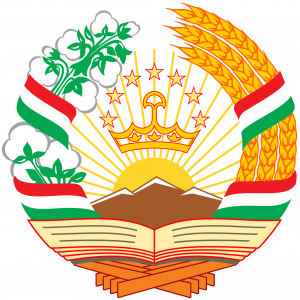 |

|
 |
THE NATIONAL ACADEMY OF SCIENCES OF THE TAJIKISTAN
STATE SCIENTIFIC INSTITUTION «CENTER FOR RESEARCH OF GLACIERS OF THE NATIONAL ACADEMY OF SCIENCES OF THE TAJIKISTAN»
INVITATION – PROGRAM
INTERNATIONAL SCIENTIFIC – PRACTICAL CONFERENCE ON THE THEME “IMPACT OF CLIMATE CHANGE ON GLACIERS AND THE IMPORTANCE OF DECLARING THE YEAR 2025 AS THE INTERNATIONAL YEAR OF GLACIERS’ PRESERVATION”
Date: March 28th, 2023, time 08:30 -18:00 (UTC +5).
Mode of transition: offline and online.
Address: Rudaki avenue 33, Glacier Research Center NAST
Dushanbe, Republic of Tajikistan
Registration link: https://docs.google.com/forms/d/1GzScJ6SHi4S2zwb5ozfSpl4To8wkK9rB5qvAq-NBnDw/viewform?edit_requested=true
ZOOM link to join the conference:
https://us06web.zoom.us/j/85977857176?pwd=aEFMb0NLZkZZV1ozdGE0MURsSmc1UT09
Conference ID: 859 7785 7176
Access code: 088854
PARTNERS:
 |
 |
 |
 |
|
 |
 |
 |
 |
THE PURPOSE OF THE CONFERENCE:
-
in the context of declaring 2025 as the “International Year of Glaciers’ Preservation”, holding a conference and finding ways to cooperate to achieve the ultimate goal of this initiative;
-
Evaluating glacier melting in the context of global warming;
-
Identification of the main directions of cooperation at the regional and international level to achieve innovative ways of studying glaciers based on the implementation of the fifth initiative of the Republic of Tajikistan;
-
Organization of platform for exchange of scientific information on state of glaciers and at the same time development of measures for study and protection of glaciers
-
Reducing the threat of glacial lake outburst floods and escalation of hydrological processes related to global warming, based on the ultimate goals of 2025 – “International Year of Glaciers’ Preservation.”
-
publication of the conference proceedings.
MAIN COURSE OF THE CONFERENCE:
-
Declaring 2025 as the “International Year of Glaciers’ Preservation” as a basis for improving the study of glaciers, as well as identifying the main means of protecting glaciers;
-
Study of the cryosphere, glaciers, snow cover and water resources;
-
the effects of climate change on glaciers and snow cover;
-
new and modern methods for studying the cryosphere, glaciers, and snow cover;
-
Use of remote sensing and drones in glacier and snow studies;
-
Develop methods to reduce the damage and harm caused by natural disasters related to glaciers, glacial lakes, and snow cover;
-
Hydrochemical radioisotope methods for studying glaciers, snow cover, and meltwater.
IN THE COURSE OF THE CONFERENCE, SCIENTIFIC PAPERS ON THE FIELD ARE ACCEPTED FOR PUBLICATION IN THE JOURNAL “CRYOSPHERE”, AND THE FINAL RESULTS WILL BE HEARD IN THE FORM OF PRESENTATIONS
TIME FOR PRESENTATION UP TO 15 MINUTES
Materials for publication in the form of a collection should be sent to the following e-mail: cryos2021@gmail.com by April 30, 2023.
The finished version of the collection will be sent to the e-mail of the conference participants.
Rules for making an article:
-
Font size – 14, typeface – Times New Roman; interval – 1; ordinary fields (H: 2 cm, H: 2 cm, L: 3, R: 1.5 cm).
-
Tables and figures should have titles. The name and numbers of the figures are indicated under the figures, the names and numbers of the tables – above the tables. Tables, diagrams, figures, formulas, graphs should not go beyond the specified fields.
-
A list of cited literature is required. References – at the end of the text, drawn up in accordance with GOST R 7.0.11-2011.
-
Footnotes only end – in square brackets, indicating the source number in accordance with the list of references given at the end of the article (for example: [1]).
-
Do not use automatic footnotes for bibliography.
-
The number of pages is no more than 14 pages.
An example of an article:
DEVELOPMENT OF NEW MATERIALS
State Scientific Institution “Center for the Glaciers Study of the Academy of Sciences of the Republic of Tajikistan” www.cryosphere.tj
The article discusses the possibility of using multichannel Landsat images to analyze the state and dynamics of processes occurring in natural ecosystems. The most common variants of the channel combinations and the interpretation of their physical meaning are given. As a practical example, the calculation of the NDVI index, which is an indicator of the photosynthetic activity of plant biomass, is given.
Text …
Text …
Text.
Literature
-
(Alphabetically and according to GOST R 7.0.11-2011.)